

This is a list of the mammal species recorded in Chile. As of January 2011, there are 152 mammal species listed for Chile, of which four are critically endangered, eight are endangered, eight are vulnerable, and eleven are near threatened.[n 1]
The following tags are used to highlight each species' conservation status as assessed by the International Union for Conservation of Nature; those on the left are used here, those in the second column are used in some other articles:
| EX | EX | Extinct | No reasonable doubt that the last individual has died. |
| EW | EW | Extinct in the wild | Known only to survive in captivity or as a naturalized population well outside its historic range. |
| CR | CR | Critically endangered | The species is in imminent danger of extinction in the wild. |
| EN | EN | Endangered | The species is facing a very high risk of extinction in the wild. |
| VU | VU | Vulnerable | The species is facing a high risk of extinction in the wild. |
| NT | NT | Near threatened | The species does not qualify as being at high risk of extinction but is likely to do so in the future. |
| LC | LC | Least concern | The species is not currently at risk of extinction in the wild. |
| DD | DD | Data deficient | There is inadequate information to assess the risk of extinction for this species. |
| NE | NE | Not evaluated | The conservation status of the species has not been studied. |
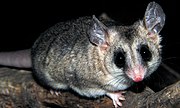
Didelphimorphia is the order of common opossums of the Western Hemisphere. Opossums probably diverged from the basic South American marsupials in the late Cretaceous or early Paleocene. They are small to medium-sized marsupials, about the size of a large house cat, with a long snout and prehensile tail.
There are six extant species of shrew opossum. They are small shrew-like marsupials confined to the Andes.

The monito del monte is the only extant member of its family and the only surviving member of an ancient order, Microbiotheria. It appears to be more closely related to Australian marsupials than to other Neotropic marsupials; this is a reflection of the South American origin of all Australasian marsupials.[1]

Armadillos are small mammals with a bony armored shell. There are 21 extant species in the Americas, 19 of which are only found in South America, where they originated. Their much larger relatives, the pampatheres and glyptodonts, once lived in North and South America but became extinct following the appearance of humans.

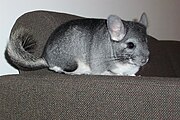
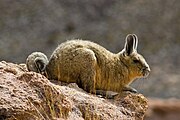





Rodents make up the largest order of mammals, with over 40% of mammalian species. They have two incisors in the upper and lower jaw which grow continually and must be kept short by gnawing. Most rodents are small though the capybara can weigh up to 45 kg (99 lb).







The bats' most distinguishing feature is that their forelimbs are developed as wings, making them the only mammals capable of flight. Bat species account for about 20% of all mammals.


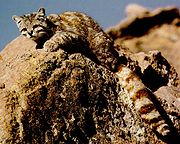
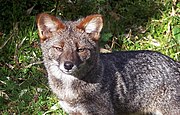


There are over 260 species of carnivorans, the majority of which feed primarily on meat. They have a characteristic skull shape and dentition.


The weight of even-toed ungulates is borne about equally by the third and fourth toes, rather than mostly or entirely by the third as in perissodactyls. There are about 220 noncetacean artiodactyl species, including many that are of great economic importance to humans.











The infraorder Cetacea includes whales, dolphins and porpoises. They are the mammals most fully adapted to aquatic life with a spindle-shaped nearly hairless body, protected by a thick layer of blubber, and forelimbs and tail modified to provide propulsion underwater. Their closest extant relatives are the hippos, which are artiodactyls, from which cetaceans descended; cetaceans are thus also artiodactyls.
|
| |
|---|---|
| Sovereign states |
|
Dependencies and |
|